Search Engine Optimization, or SEO, is a topic that often comes up when talking about websites. Search engines have their own intrinsically designed algorithms that they use to determine the quality of a website and how to rank it.
While there are many elements to SEO, technical SEO is where the groundwork is laid for your website for these algorithms. Technical SEO, in simple terms, is optimizing technical elements of a website and server optimizations, which helps search engines to crawl your website and index it more efficiently. So, what does technical SEO entail? Let’s find out.
What is Technical SEO?
Technical SEO is used to better a website’s infrastructure so that search engine bots can crawl and index the pages on your website more effectively.
Technical SEO is a process that involves auditing and optimizing technical elements of a website so that it has better chances of ranking higher on SERPs. Improving the efficiency of your website’s performance for search engines across the board requires high technical SEO skills.
The main elements of having a solid technical SEO for a website include improving page load time, making it easier to crawl for search engines, and providing search engine algorithms with enough information about your website to accurately index it. Technical SEO comes under on-page SEO. Hence, it primarily focuses on improving various elements on your website that can improve its image in the eyes of search engines.

Unleash your website's potential by harnessing Infidigit's 400+ SEO audit to achieve peak site health & dominance on Google organic search.
Looking for an extensive
SEO Audit for your website?
Unleash your website's potential by harnessing Infidigit's 400+ SEO audit to achieve peak site health & dominance on Google organic search.

Why is Technical SEO Important?
You can create a very high-quality website with the best content, and it will still not rank if your technical SEO is not up to the mark. Why? Search engine algorithms should be able to find your pages in order to crawl them, and understand the content in order to index them for the right search queries.
Simply put, technical SEO conveys to search engines what your pages are about. This includes providing information about content, internal and external links, metadata, image descriptions, and much more. This is just scratching the surface. There are many more elements such as mobile optimization, duplicate content, page loading speeds, and a multitude of other factors that go into technical SEO.
This does not mean that you have to perfect your website’s technical SEO to rank. But having it optimized makes the job of search engines easier, and gets you higher ranking on SERPs.
Why should you optimise your site technically?
It is important to keep your site technically optimized for search engines and visitors alike.
Search engines strive to provide the users with the best results for their search queries. This is why Google’s bots crawl through all your web pages and evaluate them on various factors. Technical factors in this process include page loading speed, understanding of the content, structured data, and much more. This helps search engines get a proper picture of what your webpage is about.
Similarly, technical SEO also plays a huge role in user experience. A fast website with reliable navigation and easy to use will keep the attention of the visitors. Having a rigid technical foundation for your website can significantly improve your website’s user experience.

Top 15 Advance Technical SEO Checklist
It is not uncommon to feel overpowered by the sheer number of things you must do to optimize your site. Simply peruse the following technical SEO audit checklist to enhance user experience on your site and get it to rank better in Google’s organic search results. Here is the list of top 15 technical SEO checklist you need to implement to make your website SEO friendly:
- HTTPS version
- Mobile-friendly website
- Implementation of structured data markup
- Site speed
- Optimize your crawl budget
- Optimum XML sitemap
- AMP implementation
- Avoid 404 pages
- Canonicalization
- Name your preferred domain
- Breadcrumb Menu
- Javascript
- Pagination
- Avoid Duplicate and Thin Content
- Hreflang for International Website
You could also contact us for Technical SEO Audit Services
-
HTTPS Version – A secure site is everything
Until 2014, online shopping or e-commerce websites were the only ones to employ SSL (Secure Sockets Layer) software for a safe and secure environment that facilitated transactions. However, in 2014, Google announced that all websites would have to adopt the technology if they wanted a higher organic search ranking on its SERPs and thus it began one of the most important Google ranking factors. In 2018, it began displaying the ‘not secure’ tag for the websites which did not follow its mandate and still had the ‘http://’ tag in their URLs. To prevent this from happening, all you have to do as a website owner is to ensure that your website has an SSL certificate installed. This will create a secure and encrypted connection between your web server and a browser, thereby displaying the ‘https://’ tag instead. Here is a video from Google Chrome Developer on why HTTPS is important for your website

-
Mobile-Friendly Website
In 2018, Google announced that it was going mobile-first for indexing sites. This means that the search engine looks at web-pages from a mobile device (be it a smartphone or tablet) perspective and assesses how responsive it is. You can always see how you measure up in this category by analyzing your Google Search Console data. Remember that your mobile site should have the same content as its desktop counterpart. Doing away with intrusive pop-ups is also another important optimization measure.
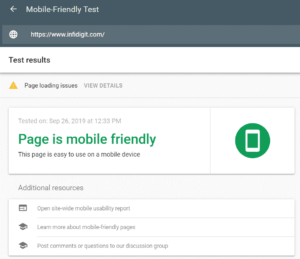
-
Implement Structured Data Markup
Structured data mark-up helps search engines understand and read your web-page better, for e.g. whether your content is a recipe, book, a how-to tutorial, etc. Simply use the Structured Data Markup Helper by Google to set it up and then test it using its Structured Data Testing Tool. But before you do any of that, remember to visit schema.org and understand which schema is appropriate for your site content and assign them to various URLs. Doing this will help you get visually enhanced rich results on Google’s SERPs, something that will catch the attention of more users. Here is what Google’s Matt Cutts has to say on Implementation of Structured Data Markup

-
Site Speed Matters
Although Google has always considered desktop site speed an important ranking factor, in 2018, it announced that the speed at which your mobile site loads is also top ranking priority. Additionally, having a slow site can lead to customers quickly losing interest in knowing more about you or shopping on your site, leading to a high bounce rate. Although you can simply use Google’s PageSpeed Insights tool to see how you fare in this category, you can also use a few tactics to help speed things up. These include choosing a landing page redirect that best works for you (temporary redirect through a 302 status code, a permanent redirect through a 301 status code, JavaScript redirects, etc.), having a caching arrangement in place, employing a fast hosting and DNS (domain name system) provider, using tools like GZIP to compress pages, having responsive images which user vector formats, etc.
-
Optimize Your Crawl Budget
A crawl budget is the number of times Google bot visits your site during a specific period to crawl and index it. As a website owner, you must ensure that no crawl cycle/unit of your crawl budget ever goes to waste. Websites employ a standard called robots.txt to talk to search engine crawlers. You must go through your site’s robots.txt file and see that it does not unnecessarily block out any critical resources (like those of JavaScript for e.g.). If it does, then your site will be incompletely crawled. Making sure that there are no orphan pages, i.e. those pages that are not connected to any others on your site is also mandatory. Keeping pages about three clicks away from the homepage, i.e. having a shallow click depth, keeping your links contextual and interlinking to pages with related content, and using keywords in the anchor text of internal links are other signs Google watches out for while ranking your site. Here is a video from Google’s

-
Optimum XML sitemap
An XML sitemap consists of useful information about your site, including the latest changes made to a page’s content, how important it is in comparison to other pages inside your site, etc. As the name suggests, an XML sitemap gives a web crawler a blueprint of your site and tells it how to navigate it. While you can use a sitemap generator to create one for your site, is also important that you submit your XML sitemap in the Google Search Console so that it can crawl and index it properly. Make sure to remove blocked URLs, redirects that are not necessary and pages with no SEO value like author bios, privacy policies, etc., take care of broken pages, and not use any long redirects. You can use a W3C validator to check for errors in coding.
-
AMP Implementation
AMP (Accelerated Mobile Pages) is a special, bare-bones version of HTML used to boost the speed and functionality of a mobile website. AMP works by deactivating scripts, forms, comments and the likes. If used correctly, AMP can inflate your CTR (click-through rate) and the number of back-links to your site. Google even displays AMP pages in important search result carousels, leading to increased user attention. However, remember that AMP is not a substitute for a mobile-friendly site.
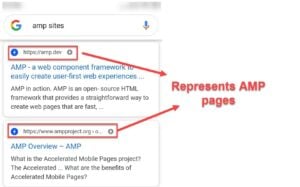
-
Avoid 404 Pages
If a page does not exist anymore or if a URL was modified by you, a 404 status code is your best bet. If you are using WordPress or a similar content publishing platform, ensure that your 404 page is search engine optimised by having a structure similar to your site, giving users options of other similar pages they can visit instead, and making it easy to navigate back to where they came from, etc. This way, you will make it easier for a web crawler to index and crawl your site while moving through it minus the confusion.

-
Canonicalization
Duplicate site content is a big no-no when it comes to maintaining good site hygiene. A canonical URL signals to Google which version of a web-page it must crawl and index. Simply using a rel=”canonical” command in your page code will help you achieve this. It is recommended that you specify a preferred canonical URL for all the pages of your site. You can also prevent your CMS (content management system like WordPress) from publishing many versions of the same content to ensure there is no duplication in the first place. Here is the what Google’s Matt Cutts has to say about Canonical
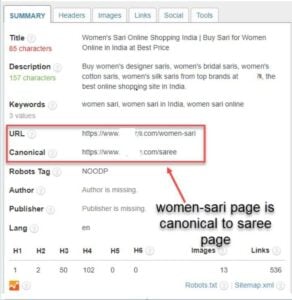
Read more about Duplicate content
Noindex Tag and Category Pages
Adding a ‘noindex’ tag to a page will instruct search engines to stop indexing and tracking the content and links on it. This is often used by developers to direct Google crawlers to their more important and prioritized pages. Thus, while working on enhancing different technical SEO factors, this tag can be put on archive or category pages.
-
Name your preferred domain
A site can be accessed by typing in either https://www.abc.com or https://abc.com (sans the www). While users may do this on a whim, without giving it much thought, it might confuse search engines and lead to indexing and page rank issues. Hence, you must indicate to Google the version you prefer. Note that there is no advantage of choosing one over the other but once you make a decision about your preferred domain name, you must stick to it, else there will be problems during site migration using a 301 redirect. To set a preferred domain name with Google, register with Google Webmaster Tools, validate all versions of your site, and then set the preferred one under ‘Site Settings.
-
Breadcrumb Menus
Breadcrumbs are an essential architectural part of the technical SEO checklist. Also known as a “breadcrumb trail”, it is a type of navigation that discloses the location of the user. It is a form of website navigation that vastly improves the orientational awareness of a visitor. Breadcrumbs clearly show the website hierarchy and point out where one user currently is.
It also lessens the number of steps a user has to take when required to go back to the homepage, a separate section, or a higher-level page. Breadcrumbs are generally used by those websites that have various sections and demand a logical structure. As a result, it serves as a great recommendation for e-commerce websites.
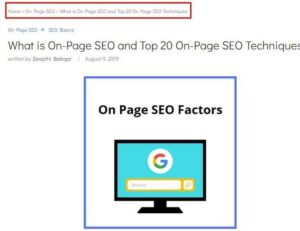
-
JavaScript
A part of the technical SEO basics aims to make JavaScript-heavy websites search-friendly. It is undertaken by an SEO agency to make the respective websites noticeable and higher rank in search engines. Google tools like the Mobile-Friendly Test, URL Inspection Tool inside Google Search Console, and the Rich Results Test are essential for troubleshooting JavaScript SEO issues. JavaScript web apps process occurs in three main phases: crawling, rendering, indexing.
-
Pagination
It is a process in which content is divided across a series of pages. Pagination, a crucial aspect of technical SEO, is used to segregate a list of products or articles into a consumable format. News publishers, ecommerce, blogs, forums, are the type of websites where pagination is used.
Duplicate content issues could be encountered while using pagination. To avoid such instances and integrate the links as well as page rank to the main page, one can make use of rel=“next” and rel=“prev” links. It is done to inform search engines that the succeeding pages are a continuation of the main page. After finding the respective links in the code, Google will recognise the main page and will use it for indexing purposes.
-
Avoid duplicate or thin content
Thin content is one of the dominating factors in understanding what technical SEO is. It can be discovered by the ranking signals that are uncovered from the data sent by Google. To avoid instances of thin content, websites are recommended to have higher quality content written by the experts instead of using mass-produced content.
Duplicate content may be removed from the downloaded HTML before it is sent for rendering. App shell models, lesser content and code may be shown in the HTML response. The same visible code on multiple websites leads to duplicate pages which may not immediately go to rendering. Eventually, with time the concern should settle itself. Although with newer websites, it could get problematic. At this juncture, self-referencing canonical link elements help prevent duplicate content issues and indicate the original page or page one that we would like to rank in the search engines.
-
Crawling
A technical SEO checklist must begin with ensuring that all the vital pages of your website are accessible and easy to navigate. Crawling is an automated process in which search engines discover new data on the web. This data includes new pages or old updated pages.
Googlebot crawls the web in two ways. The first is sitemaps, and the second is a list of URLs from past crawls. Search engines follow page links in their database to find pages they haven’t seen before. While crawling, Google focuses on new websites, dead links, and updates to old web pages.
Crawlability is the basis of a technical SEO strategy. Using algorithms, Google determines which websites to crawl, how often they should be crawled, and how many pages to crawl from each website. After you add a new page or update an existing one, submit a recrawl request by sending an updated sitemap or individual URLs to Google Search Console.
-
Creating an SEO-Friendly Site Architecture
You can help Google crawl the new pages on your website by optimizing your site architecture.
There are multiple pages on a website. Site architecture or site structure refers to the organization of these pages. Just like a building depends on its architectural design, your site architecture depends on how pages are linked within your site.
Organize pages to make it easier for search engines to find and crawl them. The structure must be in favor of crawlers. For instance, group related pages together. Link your blog homepage to individual blog posts, with every page linked to their author pages. Such a structure gives search engines an understanding of the relationship between pages.
Moreover, an effective site structure reduces the number of orphan pages. Orphan pages are the ones that do not have any internal links connected to them, making it more challenging or even impossible for users and crawlers to reach these pages.
-
Understanding Indexing
Indexing is one of the vital technical SEO factors for a page to appear in search results. After a search engine discovers a new page, it evaluates the content to determine what it covers. Then, it stores the content in its search index, an extensive database comprising billions of web pages.
Google suggests that its index is similar to the index in the book. There is an entry for every word found on every webpage that has been indexed. A page can appear on SERPs only after it is indexed.
If you wish to check whether or not the pages of your website are indexed, perform a “site:” search. To check the index status of www.example.com, type in site:www.example.com in the search bar for Google. The results mention the number of pages Google has indexed from your website. If you want to check the status for an individual page, use the page URL after “site:”.
The noindex tag and canonicalization can prevent Google from indexing web pages.
Extra Technical SEO Tips
-
Check Your Site for Dead Links
Dead Links (pages that have been deleted/moved) and broken links (non-responsive pages) can potentially harm your website’s SEO. There are two reasons for the same: one, Google crawlers spend time on these links without getting much results. Two, users visit and exit these links too quickly leaving the search engine with a bad impression of the website. Therefore, it is important to regularly audit your website, identify dead or broken links and optimise your website as much as possible. One of the easiest ways to identify these links is via Google Search Console (GSC).
-
Hreflang for International Websites
Hreflang tags help to define for a page which country and language it is aimed for. It also solves a possible duplicate content problem. If a site targets more than one country where the same spoken language is present, search engines need a little help to understand the country/language one is trying to reach. Thus, Hreflang shows the right website for the searched area in the search results.
Conclusion
Investing precious time into getting the technical SEO of your site right is a must for any business or brand owner as its benefits far outweigh the initial difficulty that they may face while understanding its concepts and executing its techniques. However, on the bright side, once done correctly, you do not have to bother about it except for the occasional site health audit. For everything current in the world of SEO and more, check our blogs.
Popular Searches
How useful was this post?
4.1 / 5. 7










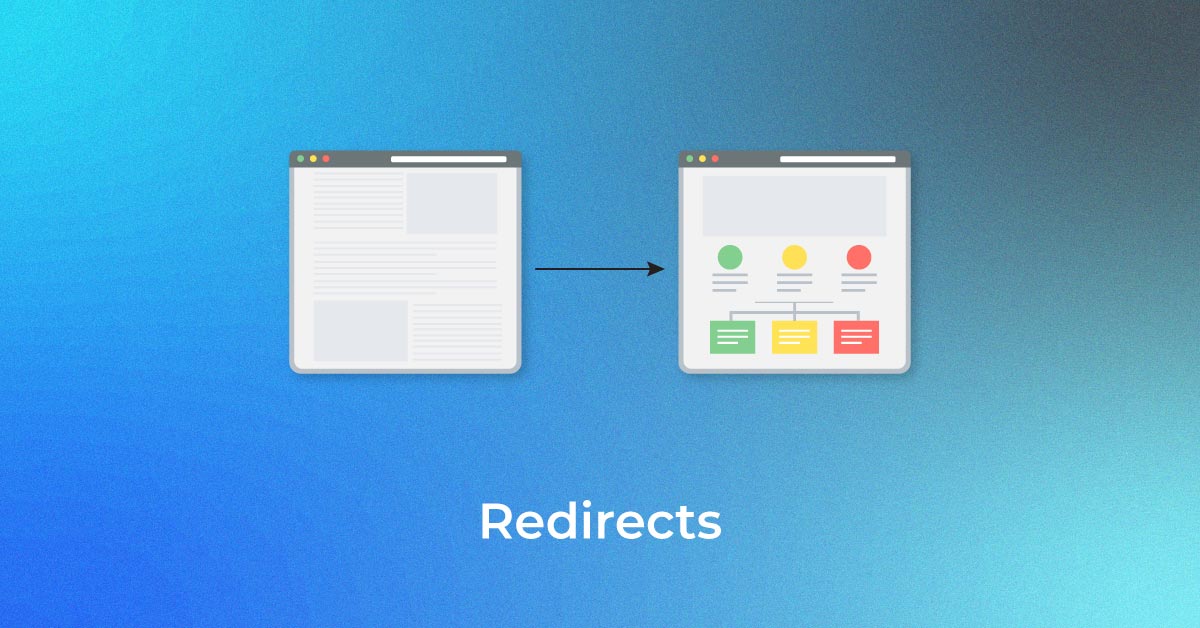





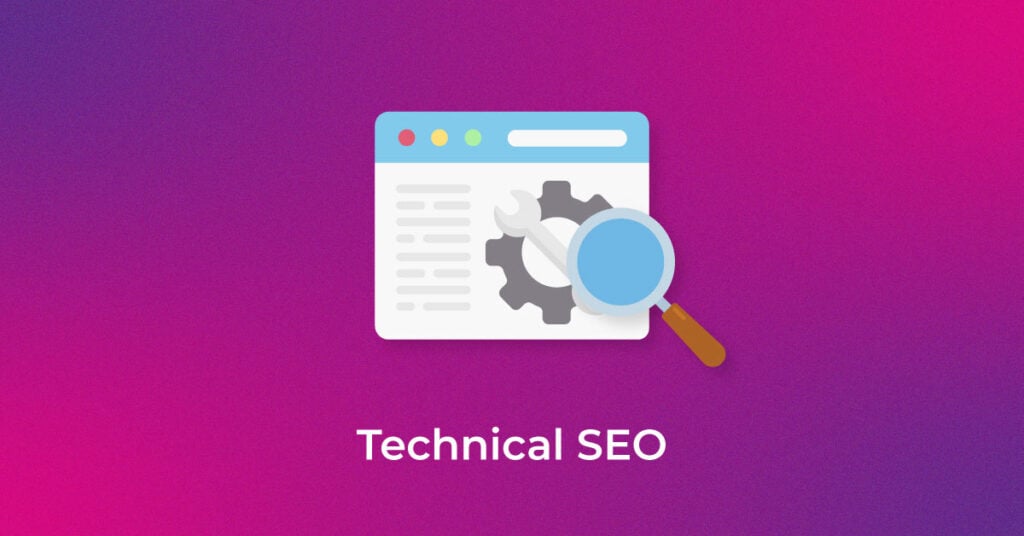
37 thoughts on “What is Technical SEO – 15 Major Technical SEO Checklist”
Thank you for sharing 10 important steps of technical SEO
We are glad that you like our post on Technical SEO. To learn more about SEO, kindly subscribe to your blogs!
Hey.. Thanks for this awesome post! This technical SEO Checklist, helped me boost the rankings for my high search volume keywords. I would be following all your blogs from now on. 🙂
Thanks, Darshit
I feel strongly about it and really like mastering more on this subject. If feasible, as you acquire experience, would you mind updating your blog with much more information and facts? It is very helpful for me.
Thanks, Ujwal for loving our post. We will surely update the blog & let you know.
Technical SEO services that take your website to the top of Google SERPs. It improves business visibility locally and internationally.
Thanks.
Great information for beginners. Thanks for sharing!
Thanks. Read our latest posts for more updates.
Hello, I am new in SEO world and currently writing my first content about led products. Can I still able to promote this even if I don’t have any idea about those tools?
Hi Kurt. Whenever you are writing content on a particular topic, do a thorough research about it. That will help you to know where you can promote your content & who are your target audience. Was this helpful, let us know your feedback in the comments section below.
I am facing an issue with my website. The error in page speed time is “eliminate render-blocking resource” how can I fix this?
Hi, Gena, thanks for sharing your valuable feedback. Yes, I can help you with this. “Eliminate render-blocking resource” is shown because the resources (CSS & JS) are blocking the first paint of your page. If your website is on WordPress, then there are many plugins to fix this issue like inline critical assets, defer less important resources to name a few. If your website is not on WordPress, then you can take the help of a developer to fix this issue. Was this helpful, please let us know in the below comments section.
Very nice and informative blog, i really come to know something unique and new. Hope you will provide more information to us.
Thank you for sharing your valuable feedback. Subscribe to us to get notifications on the latest updates.
Thanks for sharing one of the wonderful posts. The information is really useful for me. Keep it up to do great work.
Thank you for sharing your feedback with us. Please check out our latest posts for more updates.
Very inspiring article, I really like the way you have shared all the information. Thanks for this informative article.
Thank you for sharing your feedback with us.
Keep on sharing reliant information, your article is useful.
We are glad to know you liked our post. Please check out our latest posts for more insights.
Very informative piece of article, this blog has helped me to understand the concept even better. Keep on blogging.
It’s actually a great and useful piece of info. I’m happy that you just shared this useful info with us. Please stay informed like this. Thank you for sharing. Here’s another informative content on Monthly SEO Packages . You may find more details here.
thank you for sharing important steps of technical SEO
Thanks, Tarun glad to hear that. Subscribe to us for more updates.
The most I have personally struggled with is technical SEO Im not this blog magically helped me become a genius, but it definitely will help you gain a basic understanding of what needs to be learned and the fundamentals of it.
The most I have personally struggled with is technical SEO I’m not this blog magically helped me become a genius, but it definitely will help you gain a basic understanding of what needs to be learned and the fundamentals of it.
Thank you for sharing these informative tips.It really helps to improve our local seo. we need more more such blogs to develop our Digital Marketing skills. keep posting such content.
Glad to hear that you find our post helpful. Do subscribe for the latest update
Very nice and informative blog, i really come to know something unique and new.
Thank you, Pooja. Read our latest posts for more updates.
Hi, nice blog.
Thanks, Read our latest post for more information
Hey, always read your awesome blogs thanks for sharing such a wonderful blog your knowledge is very good about the topic will be very grateful if you keep sharing your knowledge like this.
Glad to hear that. Do subscribe to us for more such articles.
Nice article